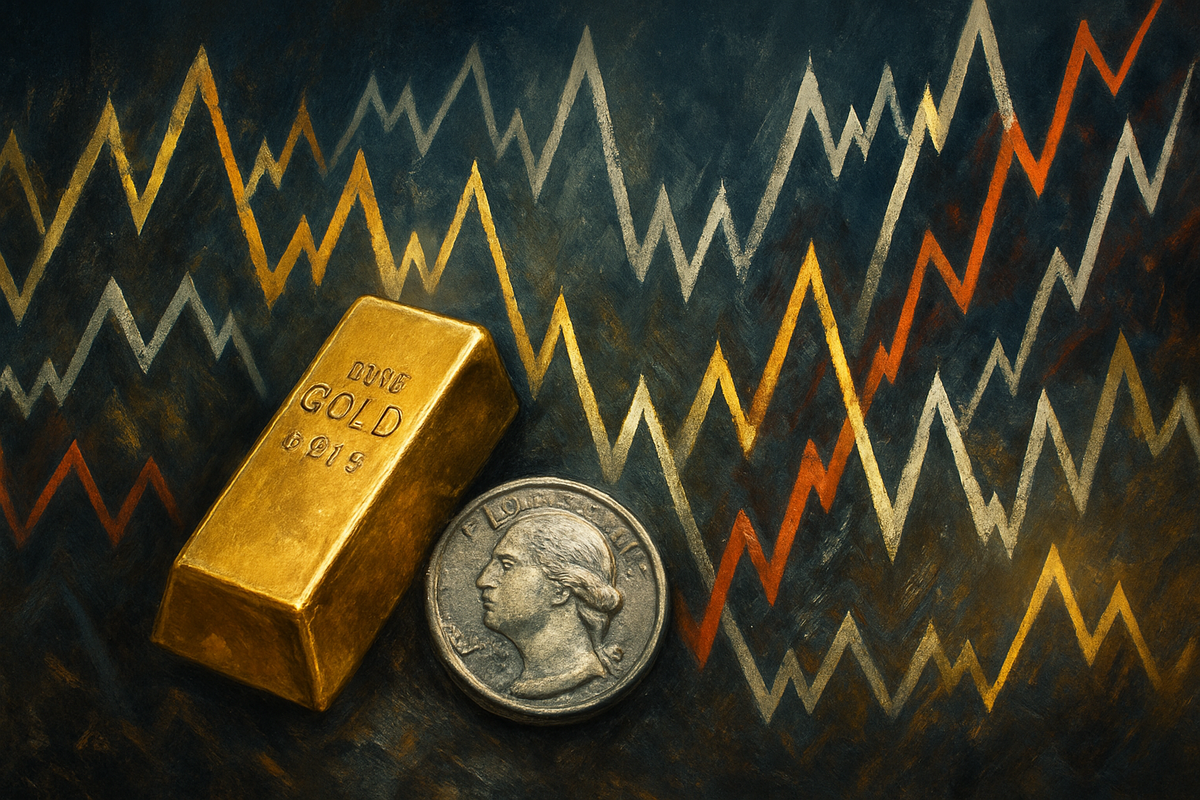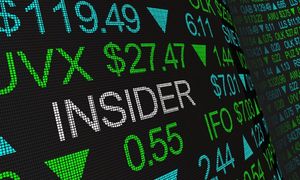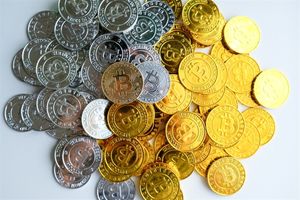
The global financial markets are witnessing an extraordinary period of turbulence in the precious metals sector, as gold and silver experience a "wild ride" marked by historic price surges and equally sharp declines. This extreme volatility, particularly evident throughout 2024 and 2025, has sent ripples across investor portfolios and raised significant questions about market stability as the world navigates a complex interplay of geopolitical tensions, shifting monetary policies, and persistent inflation.
Leading up to October 21, 2025, both gold and silver have shattered previous records, only to face swift corrections that underscore the precarious nature of their current ascent. Gold surged past an unprecedented $4,300 per ounce, while silver breached the $50 mark, reaching an all-time high above $54. This dramatic price action, fueled by a flight to safe-haven assets and robust industrial demand for silver, presents both immense opportunities and formidable risks for investors grappling with an unpredictable economic landscape.
A Historic Ascent and Abrupt Corrections
The journey of gold and silver through 2024 and 2025 has been nothing short of spectacular, characterized by a relentless climb to unprecedented heights punctuated by sharp, profit-taking induced corrections. Gold, the traditional safe-haven asset, saw its price surge by over 60% in 2025 alone, breaking the $3,000 per ounce mark by mid-March and eventually touching an all-time nominal high of approximately $4,398.00 per ounce on October 20, 2025. This rally was initially propelled by robust Chinese demand and persistent inflation concerns in 2024, where gold surpassed $2,685 per ounce. Throughout 2025, expectations of aggressive monetary easing by the US Federal Reserve, coupled with escalating geopolitical tensions in Eastern Europe and the Middle East, further cemented gold's appeal. By September 2025, gold had sequentially breached the $3,500, $3,600, $3,700, and $3,800 thresholds, before crossing the psychologically significant $4,000 milestone in October.
Silver's performance mirrored, and in some aspects even outshone, gold's ascent. The "poor man's gold" rocketed nearly 80% higher in 2025, shattering its long-standing $50 per ounce ceiling to reach an all-time high of $54.3775 per ounce in mid-October 2025. This surge was not solely driven by its monetary appeal but also by burgeoning industrial demand from the green energy sector, including solar panels and electric vehicles, coupled with persistent supply deficits. By July 2025, silver had reached $39.30, and continued its upward trajectory through September, breaking the $40 and $42 marks.
However, these historic gains were not without their dramatic reversals. The latter half of October 2025 witnessed a significant "correction" phase. On October 17, 2025, silver experienced an over 6% single-session drop, while gold fell 3.0%. The current date, October 21, 2025, saw gold futures slip 0.24% to $4,349.24 per ounce and silver futures drop 1.72% to $50.50 per ounce, easing from their recent peaks. These sharp declines are attributed to profit-taking, a strengthening U.S. dollar, and an easing of safe-haven demand amidst optimism over a planned U.S.-China meeting, alongside the conclusion of India's seasonal gold-buying spree.
The extreme volatility has been driven by a confluence of powerful factors. Geopolitical instability, including ongoing conflicts and heightened trade tensions between major economies like the US and China (exacerbated by new tariffs from the Trump administration in April 2025), has fueled safe-haven demand. Simultaneously, expectations of aggressive interest rate cuts by central banks, particularly the US Federal Reserve, have reduced the opportunity cost of holding non-yielding assets. Furthermore, central banks globally have engaged in an unprecedented gold acquisition spree, purchasing over 1,000 tonnes annually for three consecutive years (2022-2024), driven by de-dollarization trends and a desire to diversify reserves. Persistent inflation concerns and, for silver, robust industrial demand creating structural supply deficits for seven consecutive years, have also played critical roles.
Key Players and Market Reactions
The "wild ride" in precious metals has involved a diverse array of key players and stakeholders. Central Banks globally, particularly those in Asia and the Middle East, have been significant buyers of gold, accumulating reserves as a strategic asset and as part of a broader de-dollarization trend. Institutional Investors have shown strong demand through Exchange Traded Funds (ETFs) and direct holdings, while Speculative Traders have contributed to both rapid price surges and subsequent corrections through their buying and profit-taking activities. Mining Companies have seen their operational expenses rise but have also benefited from significantly higher commodity prices, especially gold producers. Governments, particularly the U.S. government, has influenced market sentiment through trade policies and economic stability. The Federal Reserve's monetary policy decisions have been a cornerstone of precious metals dynamics, with expected rate cuts providing substantial market support. Lastly, Retail Investors, especially in India, have increased their buying, viewing silver as a more accessible alternative to gold. The Industrial Sector, encompassing electronics, solar panel, and electric vehicle manufacturers, has been a crucial driver of silver demand.
Initial market reactions have been a mix of exhilaration and apprehension. While the record highs generated excitement, the rapid, unpredictable price swings have instilled caution. Many analysts maintain a long-term bullish outlook, advising investors to "buy on dips" rather than "chase the rally" and to emphasize diversification and risk management through strategies like dollar-cost averaging. The volatility has also underscored the enduring role of precious metals as safe-haven assets, prompting a renewed focus on fundamental factors like supply deficits for silver and sustained central bank demand for gold, despite the speculative activity.
Winners and Losers in the Volatility Storm
The extreme volatility in gold and silver markets has created a clear distinction between companies poised to thrive and those facing significant headwinds. The beneficiaries are generally those with lean operations, strategic positioning, and a keen ability to adapt to rapid price swings, while those with high costs or significant exposure to price increases as raw material consumers stand to lose.
Mining companies are at the forefront of this dynamic. Low-cost, unhedged producers are the primary winners. With gold prices soaring past $4,300 and silver above $50, every ounce extracted translates into substantially higher revenue and fatter profit margins. Companies like Barrick Gold Corp. (NYSE: GOLD) and Newmont Corporation (NYSE: NEM), major gold producers, are seeing increased free cash flow and improved valuations. Similarly, dedicated silver miners such as Pan American Silver Corp. (NASDAQ: PAAS), Fresnillo PLC (LSE: FRES), and First Majestic Silver Corp. (NYSE: AG) are direct beneficiaries, leveraging their significant reserves. Royalty and streaming companies like Wheaton Precious Metals Corp. (NYSE: WPM) also benefit immensely as they receive a percentage of production or revenue, which increases with higher metal prices. These firms are well-positioned to expand exploration budgets and potentially acquire assets during market corrections.
Conversely, high-cost or heavily hedged mining companies face a tougher road. Those with less efficient operations or higher all-in sustaining costs (AISC) per ounce struggle to fully capitalize on the elevated prices and are more vulnerable to sharp corrections, which can lead to reduced capital expenditure and devaluations. Companies that have over-hedged their future production at lower prices miss out on the full upside of the rallies, capping their potential profits.
Precious metal ETF providers are also seeing a boon. Firms managing popular ETFs like SPDR Gold Shares (NYSEARCA: GLD) and iShares Silver Trust (NYSEARCA: SLV) benefit from increased investor interest, leading to higher trading volumes and significant inflows into their funds. This translates directly into increased assets under management (AUM) and higher management fees, boosting their profitability. In September 2025, gold and silver ETFs accounted for 72% of total passive fund flows, underscoring their appeal as diversification tools during market turbulence.
However, industrial consumers of gold and silver are feeling the pinch. Industries heavily reliant on these metals as raw materials, such as jewelry manufacturing, electronics, and the rapidly expanding solar panel and electric vehicle (EV) sectors, face significantly increased input costs. Companies like First Solar, Inc. (NASDAQ: FSLR), a prominent solar panel manufacturer, could see their profitability squeezed if they cannot effectively pass on these higher silver costs to consumers or find viable alternative materials. Manufacturers with fixed-price contracts for their end products are particularly vulnerable to unexpected spikes in metal prices.
Lastly, while some financial institutions and investment firms benefit from increased trading, those with significant short positions in gold or silver could face substantial losses. Firms offering precious metal ETFs or futures contracts also bear the risk of heightened redemption pressures during sharp corrections, impacting their AUM and profitability. The current market conditions, characterized by an "extraordinary rally" punctuated by "significant pullbacks," suggest that this unpredictable environment will continue, demanding agility and strategic foresight from all market participants.
The Wider Significance: A Barometer of Global Instability
The extreme volatility witnessed in gold and silver markets leading up to October 21, 2025, is more than just a trading phenomenon; it serves as a critical barometer of deeper global economic and geopolitical anxieties. This "wild ride" fits squarely into several broader industry trends and carries significant ripple effects across the financial ecosystem.
Firstly, it underscores the persistent inflationary pressures plaguing major economies. Gold, traditionally a hedge against inflation, has seen sustained demand as central banks, after aggressive rate hikes in 2023 and 2024, now grapple with balancing inflation control and economic growth. Expectations of aggressive monetary easing by the Federal Reserve have further fueled this demand. Concurrently, the ongoing trend of central bank gold accumulation, particularly by Asian and Middle Eastern nations seeking to diversify away from the U.S. dollar, signifies a strategic shift in global reserve management.
Secondly, the volatility is a direct reflection of heightened geopolitical tensions and economic uncertainty. Ongoing conflicts, renewed trade tensions between the U.S. and China, and political transitions are driving investors towards safe-haven assets. The erratic price behavior of precious metals signals a period of heightened global risk and potential reordering of capital flows. For silver, its dual role as a precious metal and an industrial commodity means its price is significantly influenced by the green energy transition, with robust demand from solar panel and electric vehicle production, often clashing with supply constraints from mining.
The ripple effects are far-reaching. While gold and silver mining companies initially reap the benefits of soaring prices, sharp corrections can swiftly darken their profitability outlook, leading to premarket selling pressure. Silver mining equities, in particular, exhibit greater volatility and leverage to price movements compared to gold miners. The jewelry industry, a major consumer of gold, faces reduced sales during price surges as price-sensitive buyers defer purchases. Industrial users of silver, such as solar panel manufacturers, are pressured by surging input costs, potentially driving innovation in material alternatives. Investment funds with significant exposure to precious metals must navigate these swings carefully, emphasizing diversification and risk management.
From a regulatory and policy standpoint, the volatility highlights ongoing concerns about market integrity and stability. Regulators, like the LBMA, continuously refine standards to combat market manipulation, fraud, and money laundering. The increased investor preference for physical holdings over paper derivatives, driven by counterparty risk, can strain the physical delivery infrastructure of futures exchanges, potentially causing systemic dislocations. Furthermore, if precious metal prices stabilize at lower levels, governments in mining-heavy regions could face reduced tax revenues, impacting public spending. The Federal Reserve's monetary policy trajectory remains a critical determinant, with any deviation from expected dovish policies capable of amplifying market downturns.
Historically, this period draws parallels with several significant events. The 1980 Hunt Brothers manipulation of the silver market, which saw prices collapse after a dramatic surge, serves as a cautionary tale of concentrated positions. The 2011 silver price surge, where silver's annualized volatility reached 40-45% compared to gold's 20-25%, also demonstrated rapid appreciation followed by a sharp correction. Even the March 2020 COVID-19 market panic saw extreme dislocations in precious metal futures. What distinguishes the current situation is not just the amplitude but also the velocity of these price movements, setting a new benchmark for price behavior amidst a confluence of persistent inflation, central bank policy shifts, sustained physical demand, and pervasive geopolitical instability.
What Comes Next: Navigating a Bullish Yet Volatile Future
As gold and silver markets move beyond the immediate "wild ride" of 2024-2025, the outlook from October 21, 2025, onwards suggests a complex but predominantly bullish long-term trajectory, albeit one punctuated by continued short-term volatility. Investors and companies must prepare for a landscape demanding strategic adaptation and astute risk management.
In the short-term (late 2025 - early 2026), further intensified volatility is expected. Following gold's peak near $4,398 and silver's record at $54.3775, analysts foresee potential corrections. Gold might consolidate after nearing a short-term peak between $4,400-$4,600, possibly correcting towards $3,500. This is largely viewed as a healthy market adjustment rather than a fundamental reversal, given the strong underlying demand. Silver is anticipated to remain highly volatile, historically swinging about 1.7 times faster than gold, with profit-taking continuing to influence its price. However, robust industrial demand, particularly from China's surging solar cell exports, will likely underpin silver prices, suggesting a new, higher equilibrium.
The long-term outlook (2026 onwards) for both metals remains robustly bullish. Analysts project continued appreciation, with gold potentially reaching $4,438-$5,000 per ounce by 2026, and some aggressive forecasts even suggesting $6,500 by 2027 and $10,000 by 2030. Silver is also expected to maintain strong bullish momentum, with projections of $65 per ounce by the end of 2026, and even $200-$250 by 2030-2035, driven by its significant industrial demand and structural supply deficits. These long-term drivers include persistent geopolitical risks, sustained central bank gold accumulation, ongoing economic uncertainties, a weakening U.S. dollar, and the metals' role as inflation hedges.
For investors, strategic pivots are crucial. Diversification remains paramount, with precious metals serving as a hedge against inflation, currency weakness, and global shocks. A 5-10% allocation to gold within a total portfolio is often recommended. Given the volatility, cautious exposure and disciplined risk management are essential, especially for silver. Investors should consider accumulating positions on market dips, viewing pullbacks as buying opportunities rather than signs of weakness. Systematic profit-taking strategies can help lock in gains as prices approach institutional targets. Investment avenues range from physical metal for direct ownership to highly liquid ETFs, and leveraged mining equities or derivatives for those seeking higher risk/reward profiles. Close monitoring of Federal Reserve policy, economic data, and geopolitical developments will be vital.
Companies in the mining sector will find a favorable environment for accelerated exploration and development projects, capitalizing on expanded profit margins. Small-cap silver and gold mining companies, despite recent gains, may still offer significant upside. Conversely, industrial users of silver, particularly in high-growth sectors like solar and electric vehicles, will need to explore hedging strategies or invest in researching alternative materials to mitigate rising input costs due to increased demand and supply tightness.
Market opportunities include the strong potential for continued price appreciation driven by safe-haven demand, persistent inflation, central bank buying, and for silver, inelastic industrial demand coupled with structural supply deficits. However, significant challenges persist, including extreme volatility, the likelihood of short-term corrections, and the potential impact of monetary policy shifts or easing geopolitical tensions. The markets are currently described as "overbought," increasing the risk of sharp pullbacks, and reduced liquidity at current high price levels could amplify volatility.
Potential scenarios range from a continued bull market (high probability) where gold surpasses $5,000 and silver reaches $60-$75 in the near term, to a correction and consolidation phase (moderate probability) offering new entry points, or continued choppiness within a higher range (moderate probability). A significant downturn (low probability) would only likely occur with a rapid resolution of global conflicts or unexpectedly aggressive monetary tightening. The overarching theme is that while short-term corrections are expected, the long-term fundamentals for precious metals remain robust, necessitating agility and a keen eye on the evolving global landscape.
Comprehensive Wrap-up: Agility in an Unpredictable Era
The extreme volatility in gold and silver markets through 2024 and 2025 has ushered in an era of unprecedented price action, marked by historic surges and swift corrections. The key takeaways from this period are the enduring role of precious metals as safe-haven assets amidst geopolitical turmoil and economic uncertainty, and the significant impact of central bank policies and industrial demand (especially for silver). Gold's ascent past $4,300 and silver's breach of $50 are not merely speculative bubbles but reflections of deep-seated anxieties and structural shifts in the global financial system.
Moving forward, the market is expected to remain highly dynamic. While short-term corrections are probable, the long-term outlook for both gold and silver remains fundamentally bullish. Persistent inflation, ongoing geopolitical risks, continued central bank accumulation, and robust industrial demand for silver are powerful tailwinds that are unlikely to dissipate quickly. However, this bullish trajectory will likely be accompanied by significant price swings, demanding a high degree of agility and strategic foresight from all market participants.
The lasting impact of this "wild ride" is a reinforcement of precious metals' role as essential components of a diversified portfolio, offering protection against systemic risks. For investors, the coming months will require a disciplined approach:
- Watch for: Signals from central bank monetary policy, particularly the Federal Reserve's interest rate decisions, which could influence the U.S. dollar's strength and the attractiveness of non-yielding assets.
- Monitor: Geopolitical developments and trade relations, as these continue to be primary drivers of safe-haven demand.
- Observe: Industrial demand trends for silver, especially from the green energy sector, which will dictate its unique supply-demand dynamics.
- Consider: Using market dips as opportunities to accumulate positions, rather than chasing rallies, and implementing robust risk management strategies like dollar-cost averaging.
In conclusion, the gold and silver markets are not merely undergoing a cyclical phase but are signaling a more profound reordering of global capital and a persistent flight to tangible assets. Navigating this unpredictable era successfully will hinge on understanding these underlying forces and adapting investment and business strategies accordingly.
This content is intended for informational purposes only and is not financial advice





